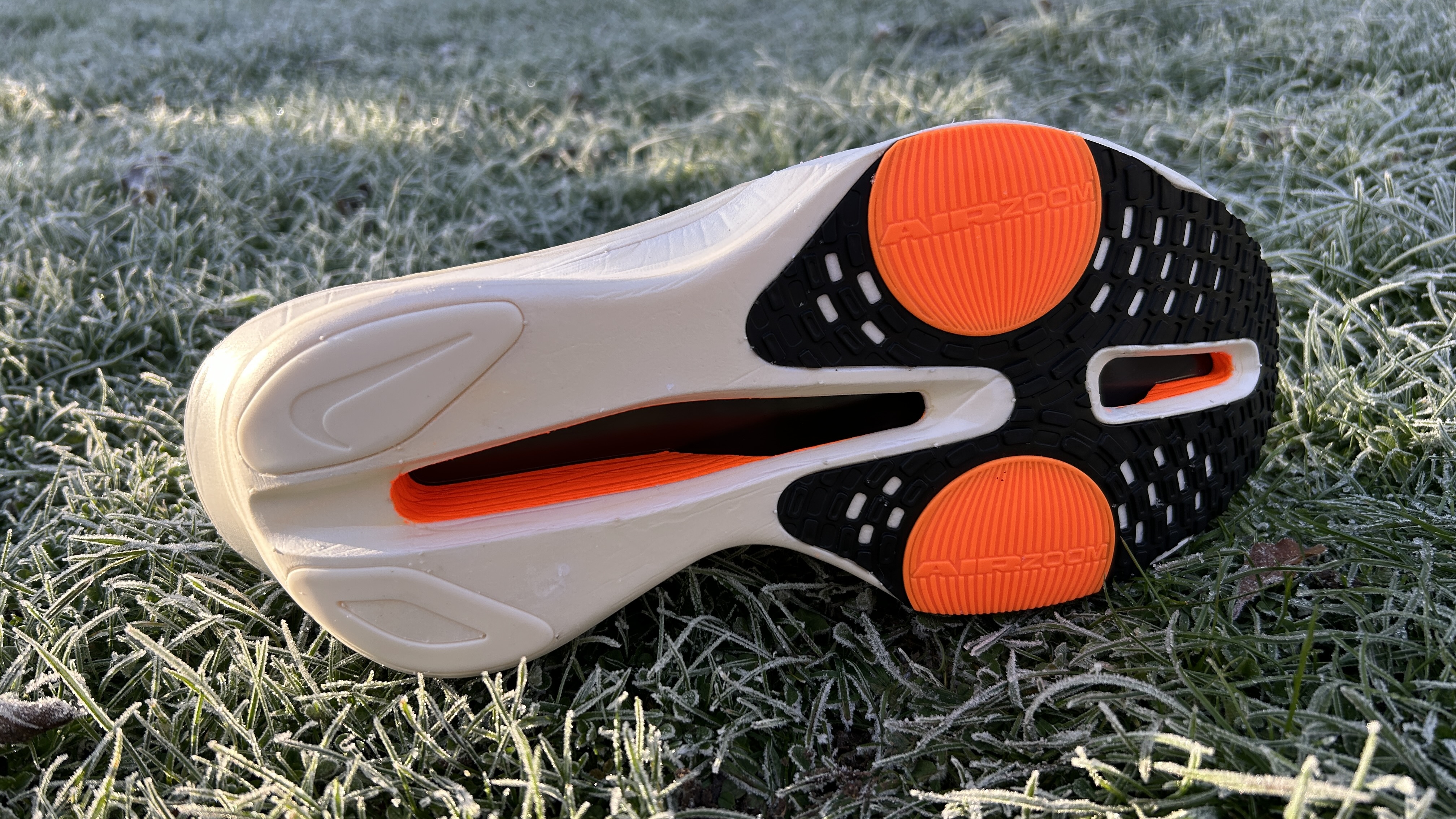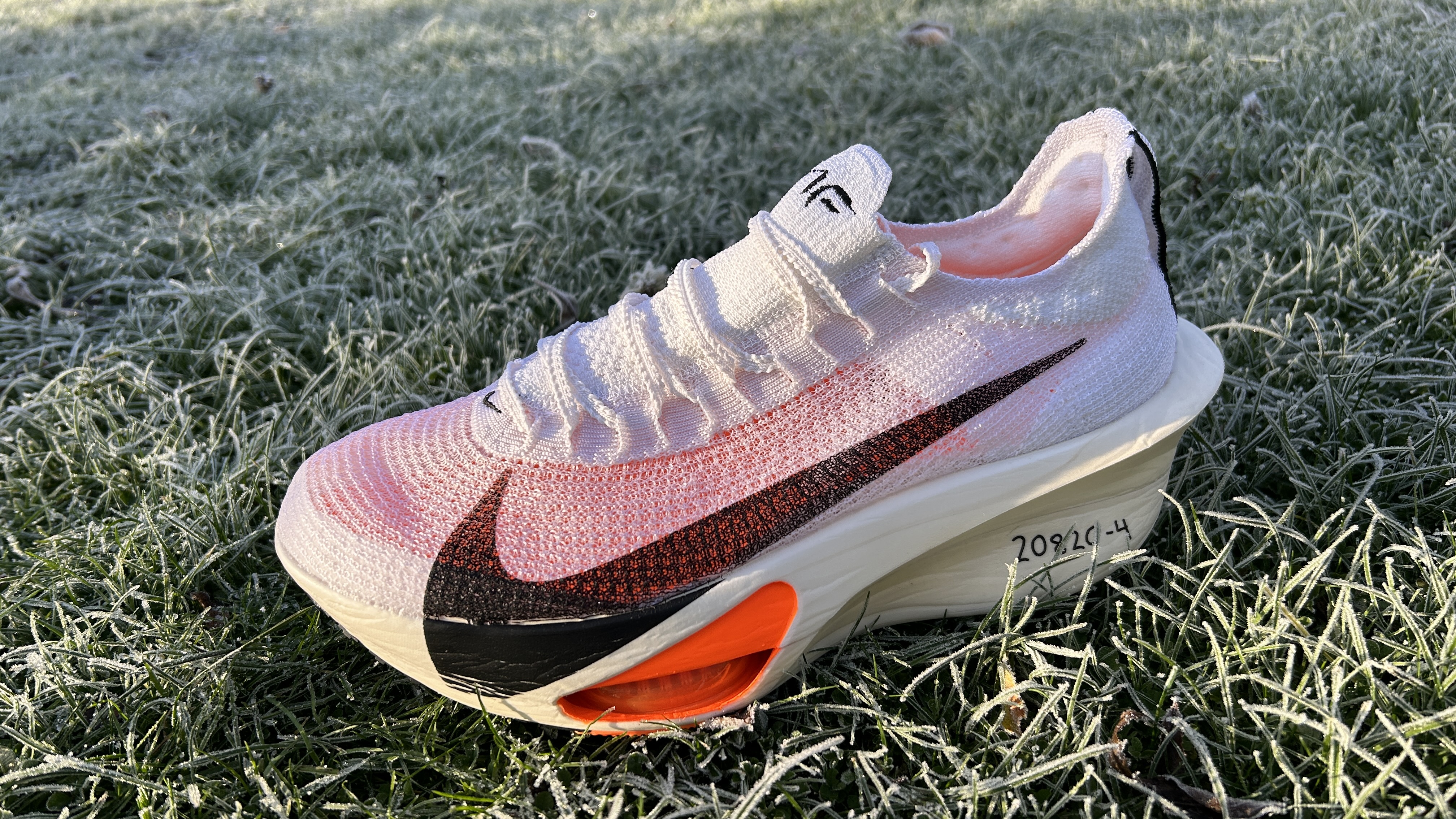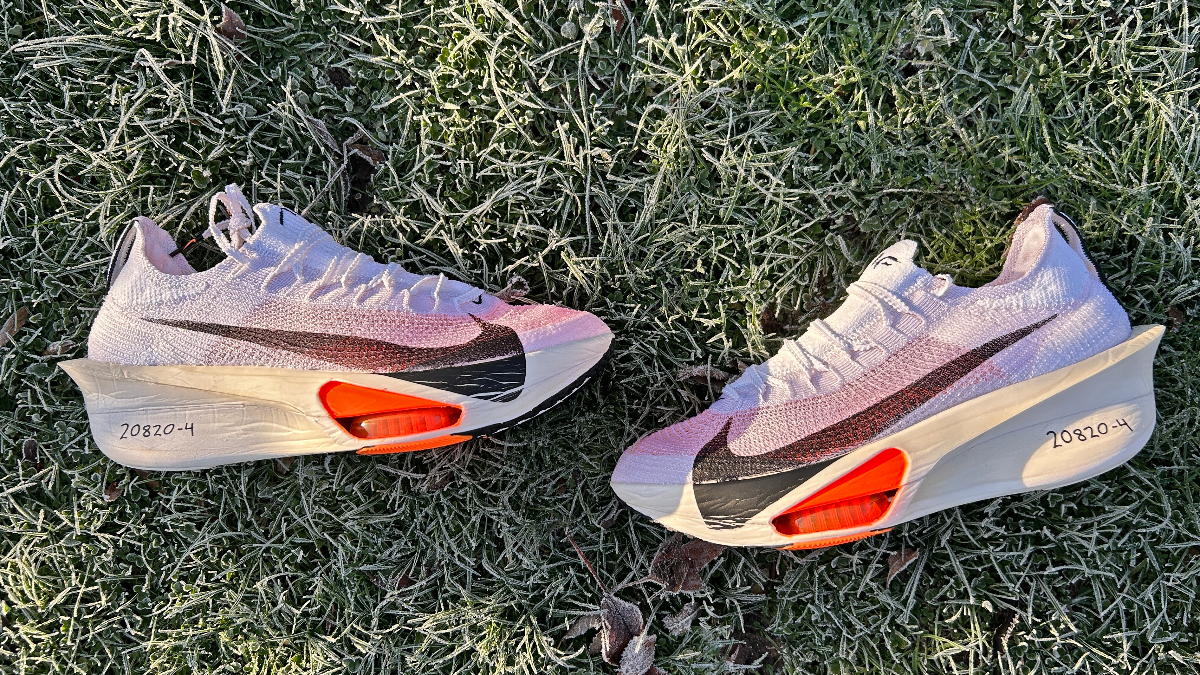Our Verdict
The Nike Alphafly 3 delivers in all the ways you’d hope a modern racing shoe would. It’s light, springy, smooth and incredibly fast. There’s no shoe I’d rather be in for a marathon and, really, for any distance it’s hard to argue that the Alphafly 3 isn’t the best racing shoe available.
For
- Lightest Alphafly yet
- Bouncy ride
- Smooth transition onto toes
Against
- One of the most expensive shoes
You can trust Coach
The Nike Alphafly 2 was not a hit with everyone. Although I loved it, the chunky design meant many runners steered clear and stuck with the original Alphafly or Nike’s Vaporfly, or one of the best carbon plate running shoes from other brands.
I find it hard to believe that the Nike Alphafly 3 will split opinion in the same way because it’s pretty much the perfect modern racing shoe. It’s the lightest Alphafly yet, but still bouncy, and fast over any distance—though especially good for longer events. The Nike Vaporfly 3 is the only shoe I rate as highly, but even then the Alphafly 3 would be my pick for a marathon.
Nike Alphafly 3: Price And Availability
The Nike Alphafly 3 will officially launch in its Prototype colorway on 4 January 2024. It costs $285 in the US and £285 in the UK, making it one of the most expensive carbon plate running shoes.
How I Tested This Shoe

I’ve run 40 miles in the Nike Alphafly 3, using it for several hard training runs and 5K and 10K races. I have also tested each previous version of the shoe, running sub-2hr 30min marathons in both, as well as every generation of the Nike Vaporfly and most of the best carbon shoes available. I’ve not tested the Adidas Pro Evo 1 yet, which may be one of the few shoes able to hold a candle to the Alphafly 3.
Design And Fit
Compared with the Vaporfly, to which Nike has only made minor adjustments with passing generations, the Alphafly has been significantly updated with each version. The Nike Alphafly 2 was a heavier, more stable shoe than the first Alphafly, and even bouncier for me, though the added weight and size meant some runners felt it lost the magic of the original.
Nike has trimmed that weight down with the Alphafly 3, which is the lightest version of the shoe. My UK size 9 weighs 7.7oz/220g, whereas the Alphafly 2 was just shy of 250g in the same size, and the Alphafly was around 230g.
The first two versions of the shoe had cut-outs in the midsole separating the ZoomX foam at the heel and the Air Zoom pods at the forefoot but the Alphafly 3’s midsole is continuous, which creates a smoother transition from heel to toe. The shoe has an 8mm drop, with a stack height of 40mm at the heel and 32mm at the forefoot.
Sign up for workout ideas, training advice, reviews of the latest gear and more.
As with all Nike racing shoes, the light and exceptionally bouncy Peba-based ZoomX foam is central to the Alphafly 3’s success. The Alphafly line differs from the Vaporfly by having Air Zoom pods under the forefoot along with ZoomX, which are firmer and return more energy than the ZoomX foam alone.
The Alphafly 3 has a carbon fiber plate running the length of the shoe, and has been widened on the medial side to increase stability. There is a large cut-out running down the center of the shoe to reduce weight, which shows off the plate in the midsole.

Nike has tweaked the Atomknit 3.0 upper on the shoe, redesigning the lacing system to have integrated eyelets. Nike’s laces are among the best on racing shoes, with a bobbly design that ensures they stay tied. I found the Alphafly 3 fitted well in my usual running shoe size, the same size I’ve used on the previous versions of the shoe.
One problem runners had with the previous Alphafly shoes was that they created pressure around the arch. Nike says it has taken steps to reduce this with the Alphafly 3, but I didn’t have those problems with the Alphafly 1 and 2, so I can’t say I noticed a difference with the 3.
The Fast Shot rubber outsole has minimal coverage at the heel, but the forefoot is well covered and I found the Alphafly 3 gripped well on wet runs, even when running fast. Unlike the Vaporfly 3, which showed wear and tear on the outsole after 30 miles, I’ve seen no signs of wear on the Alphafly 3 so far, and Nike says its testers got a minimum of 200 miles of use out of the Alphafly 3.
Running Performance

I had huge expectations of the Nike Alphafly 3 and it has met them. It’s an outstanding racing shoe and I loved using it for a range of fast runs, including two races running a 5K in 16min 23sec and a 10K in 33min 19sec.
The ride feels less squishy and bouncy than the Alphafly 2, but the transition onto your forefoot is noticeably faster and you still feel the propulsion from the plate and Air Zoom pods. The Alphafly 3 is lighter and nimbler than its predecessor too, which helped me to keep turning my feet over late on in races, and when doing hill reps.
I’ve run with the Alphafly 2 on one foot and the Alphafly 3 on the other, and done the same with the Vaporfly 3 and the Alphafly 3, and the new shoe feels like a mix of the two older ones. It has the aggressive transition of the Vaporfly, with the extra pop from the pods under the forefoot of the Alphaflys.
I found that the Alphafly 3 felt best for me when cruising at speed, so in the first half of races or during a steady 10K run at around my marathon pace. It feels like the Alphafly, in that you can lock in to a fast pace and holding it feels almost effortless.
For me, it then doesn’t feel quite as nimble as the Vaporfly 3 when pushing to very fast paces or late in races, when I tend to shorten my stride and increase my cadence. The Alphafly 3 still feels great for this, but it’s best when you are in control and bounding along.
Runners with a bouncier stride than my shuffle will probably enjoy the shoe even more than me for shorter, faster events, but it feels ideally suited to the marathon when it will help you roll efficiently through the distance at your race pace, whatever that might be.
Is The Nike Alphafly 3 Worth It?

The Nike Alphafly 3 is the best carbon plate running shoe I’ve tested for longer events, and only the Vaporfly 3 can rival it for shorter events. It’s expensive, but the best shoe you can get if you want one racer to conquer all distances, and the durability looks good for a super-shoe, certainly better than the Vaporfly 3.
The Adidas Adizero Pro Evo 1 may rival the Alphafly 3—elite runners will be battling it out in the two shoes throughout next year, I’m sure—but I’ve not tested it yet. The Adidas shoe also costs an absurd $500/£450 and is meant to only last one or two races, so the Alphafly 3 is undoubtedly better value.
If you didn’t like the Alphafly 2, but loved the original, the Alphafly 3 will be more to your taste. Really, it’s hard for me to imagine a runner who won’t enjoy using the shoe for racing unless they object to the idea of carbon plate shoes in general.

Nick Harris-Fry is a journalist who has been covering health and fitness since 2015. Nick is an avid runner, covering 70-110km a week, which gives him ample opportunity to test a wide range of running shoes and running gear. He is also the chief tester for fitness trackers and running watches, treadmills and exercise bikes, and workout headphones.

